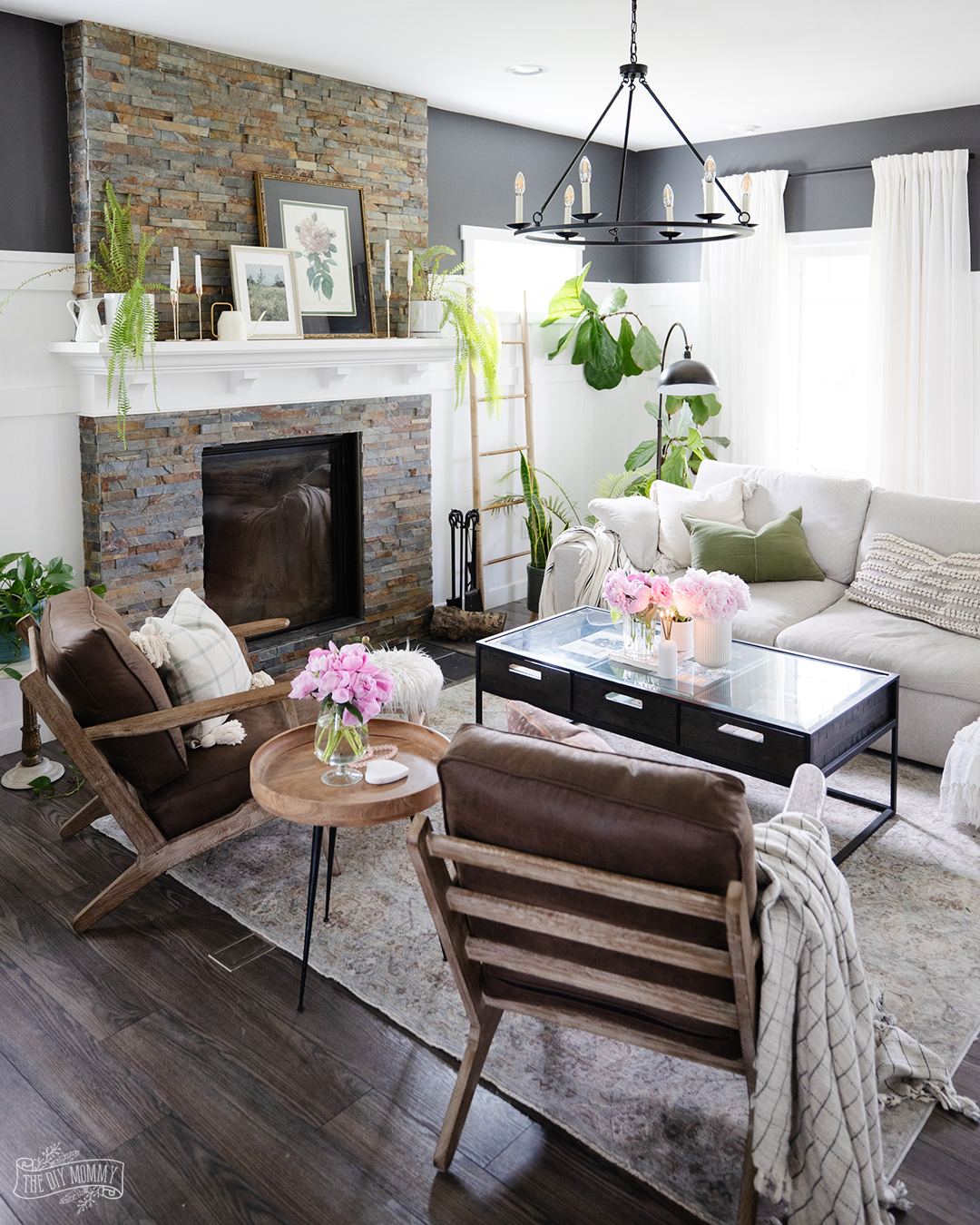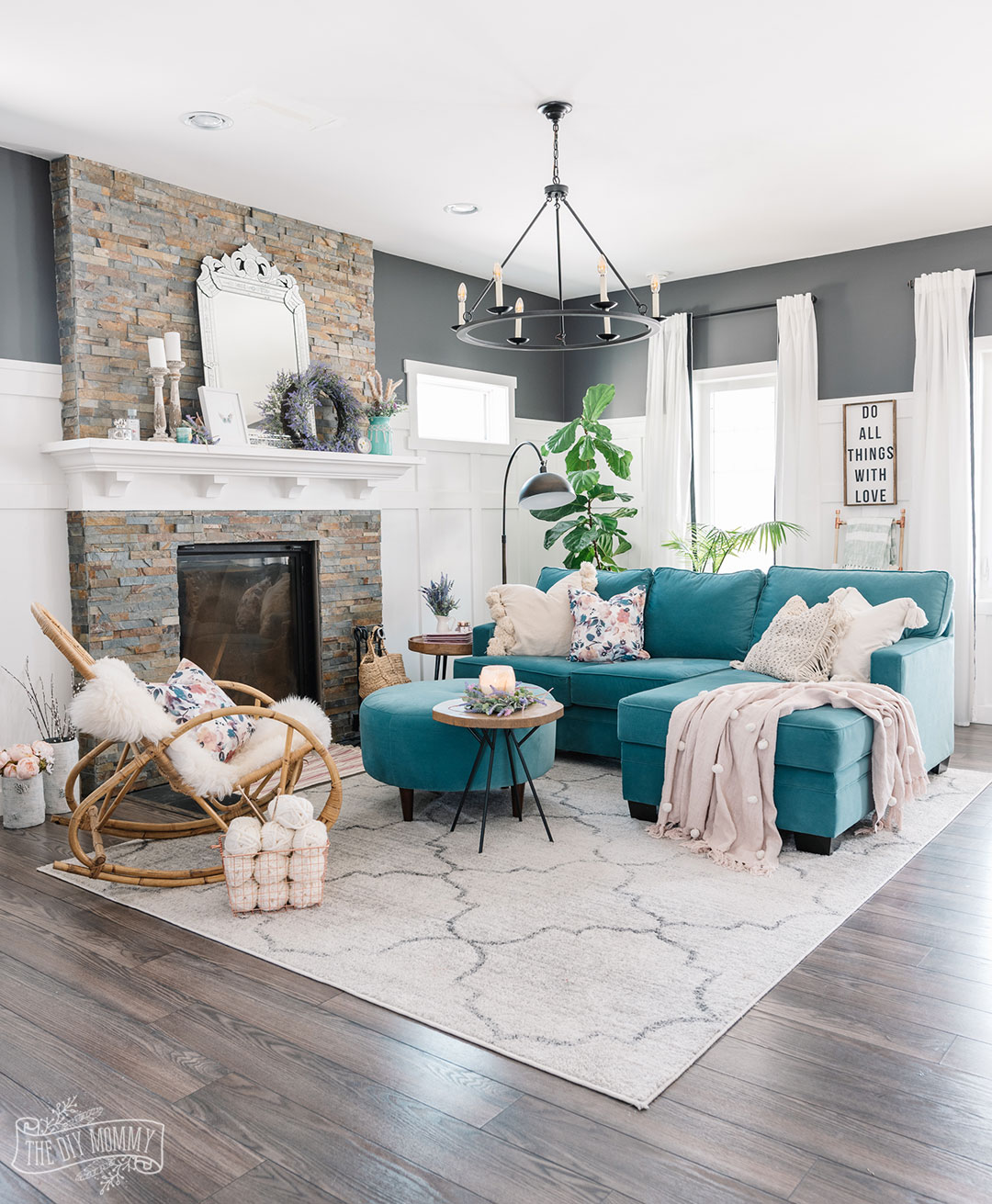9 Best AI Interior Design Generators to Transform Your Room
This post may contain affiliate links · This blog generates income via ads
Hey DIYers! Today, I’m turning to AI to solve a challenge that many of us face—finding the perfect layout for a tricky living room. My own living room is long and narrow, and despite trying various arrangements, I haven’t quite hit the mark. So, I decided to test out nine AI interior design generators to see if technology could sprinkle some magic on my space. Let’s see what they come up with!

My Living Room Dilemma
Before we dive into the AI tools, let me give you a peek at my living room. Picture a long, narrow space that’s a bit of a puzzle when it comes to arranging furniture in a way that’s both functional and cozy.

As you can see in the images above I’ve experimented with different setups, but nothing seems to click. Enter the AI interior design generators—my new hope for some innovative ideas and solutions! I went to Reddit to see which AI interior design sites were recommended the most, and made this list. Let’s see if I can create any AI-generated renderings to spark my own creativity to rearrange my living room.

AI Interior Design Generators: My Experience
First, what are AI interior design generators?
Imagine a handy website, platform, or mobile app that takes your interior design ideas to the next level – that’s what an AI interior design generator does. It assists you in crafting unique designs and brings your home concepts to life with stunning visualizations. By blending advanced machine learning algorithms with insights from real people, this software creates incredibly realistic and top-notch renderings that make your dream spaces a reality.
Is there a free AI for interior design?
Most of the AI interior design tools I’m sharing below are free, or at least they offer a free trial. My favourite tool is the last one on the list, though, and that one does require a small monthly subscription fee.

Decoratly.com
First up, we have Decoratly.com. This user-friendly site lets you log in with your Google account and upload a photo of your space for a virtual makeover. I uploaded a snapshot of my living room and clicked the “Makeover” button, which promised a more dramatic transformation.
After waiting for the rendering, I noticed that Decoratly didn’t change the layout much but rather focused on swapping colors and accessories and providing a more minimalist style. Because I wasn’t happy with the free version, I decided to try the paid option. For a mere $3, I gave it another shot with a different angle of my room and a “Vintage” filter. The result? A slight improvement with suggestions like adding a wardrobe beside the fireplace and layering tables, but overall, the changes were minimal. Not the dramatic transformation I was hoping for!

AI Room Planner
Next, I tested AI Room Planner, which offers unlimited design ideas for free. After quickly signing in with Google and uploading my photo, I selected a “Farmhouse” style from the interior design style list. This is a very user-friendly interface, and the results appeared in super-quick!
The AI Room Planner slightly tweaked my layout but added a rather awkward little chair by the coffee table. It did, however, suggest a larger coffee table and some tasteful styling for the vases on the fireplace. While the layout ideas weren’t groundbreaking, it provided a few thoughtful touches that I might incorporate.

Room AI
Room AI, a tool that promises to transform your ideas into professional designs, was my next stop. This one offers a free demo before requiring payment. I chose the “Transitional” style, thinking it would align well with my aesthetic, and uploaded my living room photo.
The result focused on styling details like the coffee table and throw pillows but didn’t tackle any significant furniture rearrangements. It wasn’t the comprehensive layout overhaul I was looking for, but the styling suggestions were quite appealing.

Rooms GPT
Moving on, I tried Rooms GPT, which allows you to upload photos and receive almost instant design ideas. I quickly signed in with my email and chose the “Joanna Gaines” style. I like that you can choose either a design style or an interior designer by name on this AI room design site.
The rendering, however, was a bit of a disaster. The furniture appeared smushed with extra legs everywhere—definitely not a usable layout. While Rooms GPT’s speed was impressive, the quality of the design left much to be desired. On to the next!

ZMO.ai
Next up was ZMO.ai, a highly recommended tool on Reddit. I selected the “Country House” style for my living room makeover. Unfortunately, it suggested repaneling my space with wood and adding a jumble of rustic elements—definitely not my cup of tea! I tried the “Sweet” style for fun, but it resulted in a circus-like mix of extra bright turquoises and pinks. While the tool was unique, it didn’t quite hit the mark for my living room. ZMO.ai is definitely not my preference for a good interior design inspiration tool, however it was entertaining to try.

Playground AI
Playground AI was next, allowing me to write a detailed prompt and upload my living room image. This tool finally moved my furniture around! It suggested placing the sofa on the opposite side of the fireplace and adding a larger square coffee table, giving me a refreshing new perspective. I also loved all the textures that were included in this space like velvets, woods, and glass.
The design had some issues, like a loveseat and chair too close together, but it was a step in the right direction. I uploaded another photo and received more interesting ideas, including a sofa facing the fireplace. Despite a few rendering quirks, Playground AI stood out as one of the better tools.

Xona.ai
Next, Xona.ai entered the scene. I uploaded my photo and chose a design style. Xona.ai’s suggestions encouraged me to incorporate more color into my living room and proposed interesting layout ideas, like placing a chair near the fireplace. However, it had its share of glitches, such as a double coffee table and double fireplaces.
The idea of this design is stunning, though, and it definitely inspired me to try some bolder color schemes in my living space!

DesignedbyAI.io
DesignedbyAI.io required a payment of around $13 Canadian for one rendering (or you can pay for a monthly subscription), with results delivered a few hours later. I was able to provide detailed descriptions with a text input of what I wanted, so I had high hopes.
The images, however, were quite the mess, almost as if my living room photo had gone through a blender! Despite the chaotic renderings, one idea—a TV on the left-hand side of the room—was a novel concept I hadn’t considered before. While it wasn’t the design miracle I hoped for, it offered a few thought-provoking ideas for this home designer.

MidJourney
Finally, I revisited MidJourney, an AI image generator I’ve used before. This tool, accessible through its Discord server, costs about $10 USD per month. After uploading my living room photo and providing a detailed prompt, MidJourney produced some beautiful interior AI images. What I love about MidJourney is that it provides almost photo-like realistic renders.
The designs included different layout ideas, like the sofa on the left or facing loveseats. MidJourney also suggested a built-in coffee bar area and provided layering ideas for coffee tables. The ability to refine the design by tweaking the prompt was a fantastic feature, making it my favorite AI-powered tool.

I’ve written a post all about how to use MidJourney to create stunning interior design renderings, and you can read it here. I include in detail how to create an interior image from writing the prompt to modifying your image.

After experimenting with nine AI interior design generators, it’s clear that while none of them offered a perfect solution, they each had their merits. The final design I settled on, inspired by MidJourney, involved moving my furniture around to create a new layout that works quite well for my long and narrow living room. As you can see, I took inspiration from the AI rendering and moved my sofa to the right of the fireplace and my two chairs to the opposite side with my coffee table in the middle.

The journey through this AI technology has shown that while they’re not ready to replace interior designers, they can be invaluable in sparking new ideas and providing fresh perspectives. I think of these AI generated images like initial sketches for a space that you can use as a starting point in your interior design process. Ultimately, your personal creativity will be the key to designing a space that’s uniquely yours and perfect for your family.
So, what do you think? Have you tried any AI design tools, or are you tempted to give one a go? Share your thoughts and experiences in the comments below. And if you’re eager to learn more about my favorite home decor tips, check out my next video right here. Until next time, happy decorating!
